Do you have a child or student who freezes up when he comes to longer words in his reading? Often times, readers {especially struggling readers} don’t realize that most longer words are just smaller words and patterns put together. Other times, readers know this about longer words, but may still have a hard time breaking them down into manageable chunks.
That’s what learning about syllable types is all about. Not only does learning about the 6 types of syllables help kids see that longer words can be broken down into chunks, it helps them see how they are broken into chunks. While I have a simple printable for breaking down longer words, I have found that learning about the specific syllable types has really helped my 4th grader take off in his reading this school year.
I created a 6 Syllable Types Resource Pack for him to use a home to reinforce what he’s been learning in school. {FREE printable pack found at the end of this post.}
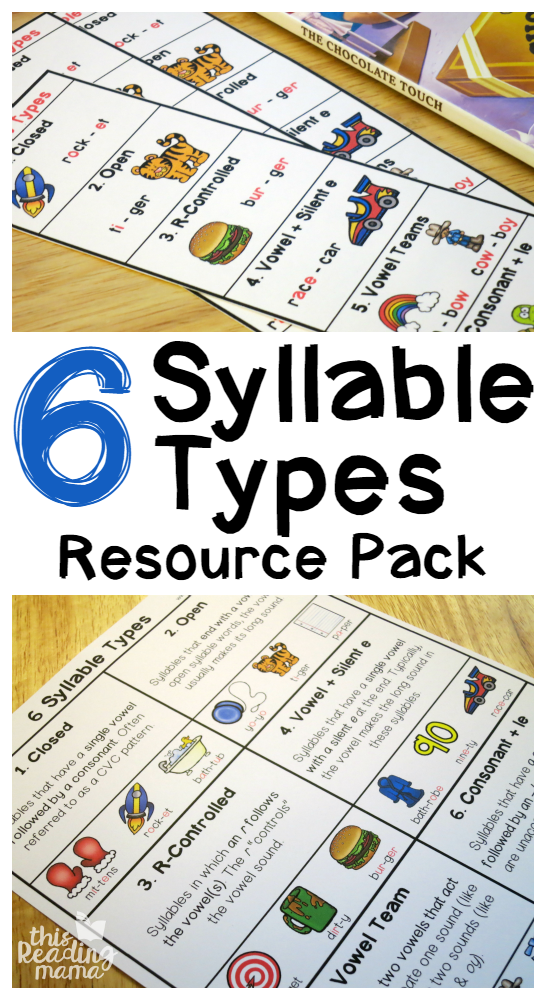
*This post contains affiliate links.
6 Syllable Types Resource Pack
In this resource pack, you’ll find a student page, perfect to slip into a reading notebook or in an area where kids read.
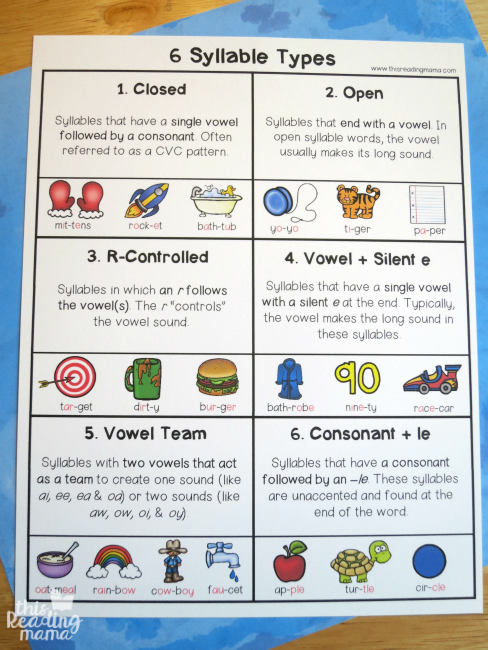
The page has the 6 syllable types (closed, open, r-controlled, vowel + silent e, vowel teams, consonant + le) with their definitions
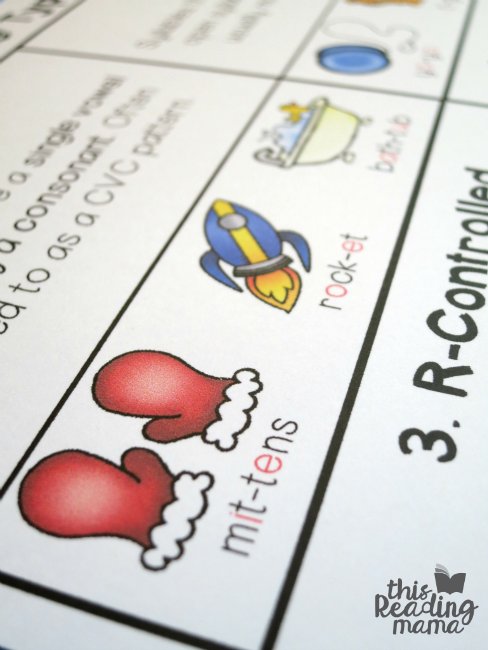
and 3-4 images (with words) to show them how the syllable type applies to real multi-syllabic words.
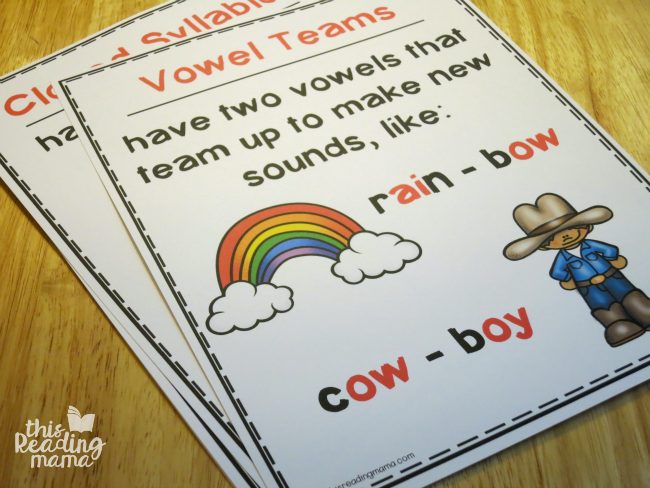
The wall charts are perfect to place at a reading center, guided reading area, or just on the wall in general.
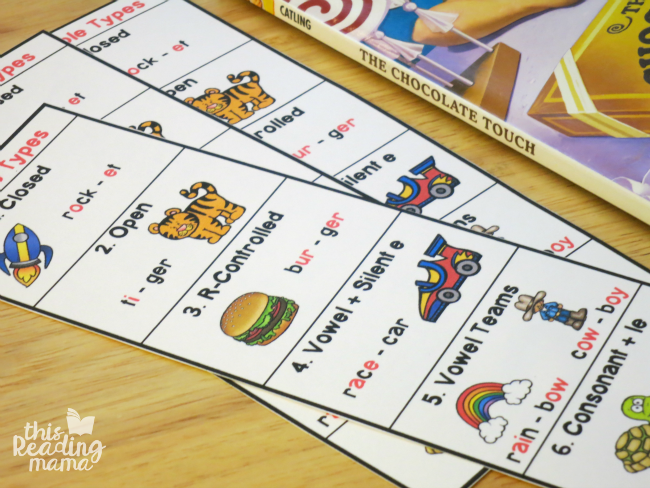
And the bookmarks can be carried around easily and serve as a great reminder.
Looking for even more syllable practice?
Snag a copy of my 6 Syllable Types Interactive Pack!
{keep scrolling for the freebie}
Teaching the 6 Syllable Types
So, how exactly do you teach the 6 syllable types? One at a time. The order in which I included them in the pack is the order that is developmentally appropriate for teaching vowel sounds.
If your child is able to quickly decode words like kit or ten, it is a great time to show him or her how you can combine these two CVC words to create a longer word. Younger kids especially feel very successful when they can read or spell “big” words, like kitten.
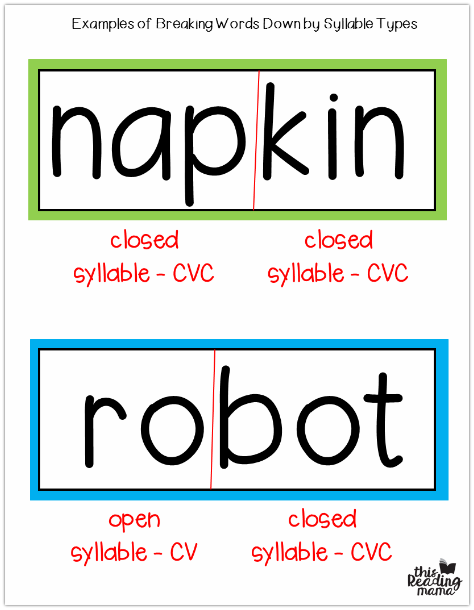
I have found that it’s good to practice looking for the syllable types you’ve studied out of context. Write words down and work on breaking them apart together. Talk about which syllable type(s) you see. If it helps your child, label them with the consonant and vowel abbreviations, like CVC.
It works beautifully if the word is pulled directly out of the reading the child is doing. The appendix of Words Their Way has tons of word lists that fit the patterns of all 6 syllable types and I refer to it often. If you use All About Spelling or All About Reading, you’ll notice that once kids know their CVC words, they start introducing longer words that kids can break down and spell right away.
More Resources You May Like:
- Strategies for Reading Longer Words
- Prefixes and Suffixes Learning Pack
- Open and Closed Syllable Activities
- Long Vowel Word Study App – reviews and features the first 5 syllable types from this pack
~Becky
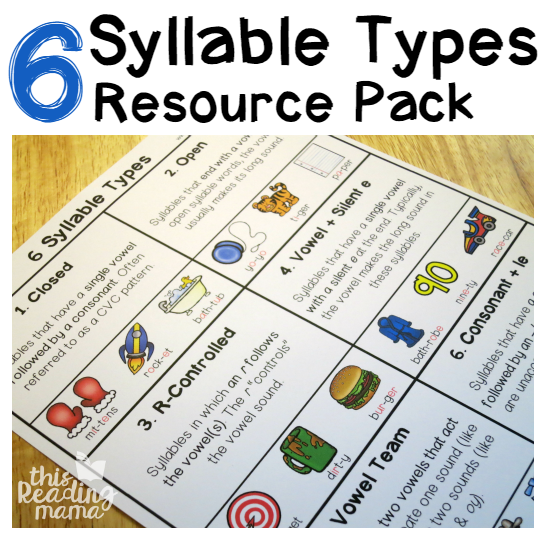
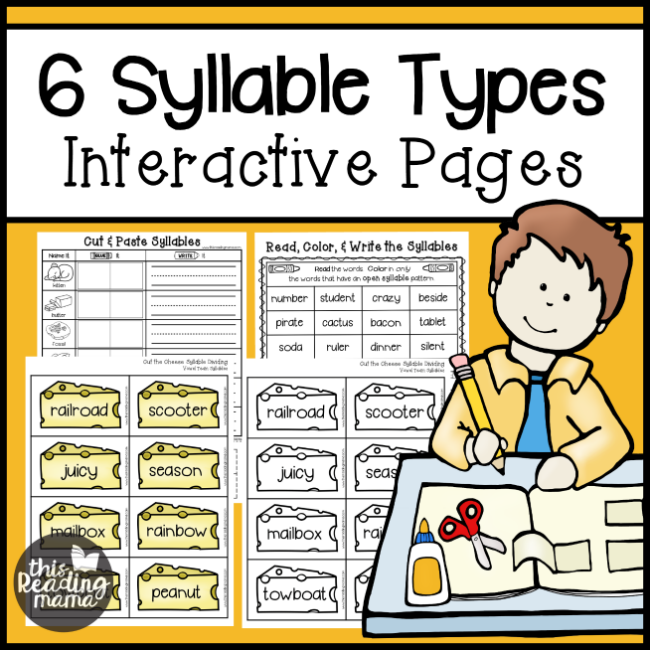


These are amazing! Thank you so much for making it available for free!
You’re very welcome! 🙂
Thank you so much. I will use these with our homeschool. ?
I don’t think “Thank you.” is enough. But, thank you. Your hard work in putting this resource together for teachers is greatly appreciated.
Aw, thanks! You’ve made my day. 🙂
This is EXACTLY what I have been looking for! What an amazing product…and thank you so much for sharing your hard work for free!
You’re welcome!
I was just about to get this, but its saying it is $6. I need help with our going into 4th grade speller. Is this what you would suggest? Is there another option that is free? thanks in advance.
Yes, keep scrolling past the $6 pack to the VERY END of the post and click on the teal download button for the freebie.
Hi,
I’ve read your information about open & closed syllables. I am a Junior Primary teacher but currently am tutoring children after school 5 nights a week. They struggle with literacy & numeracy skills.
I am a tad confused about “open syllables”. In some words the vowel in the open syllable says it’s long name, such as in ‘mO/tel’. However there are plenty of words where the vowel doesn’t say a long sound, such as in ‘ca/bin’. How do you teach a child to distinguish which open syllables will be long? I have explained to my students that it has something to do with the ‘stress’ we put on the first or second syllable, but if a child can’t even read the word they won’t know which syllable to stress.
Any help or correction would be appreciated! 🙂
Kind regards
See if this post helps –> https://thisreadingmama.com/open-closed-syllable-pages-read-draw/
Thank you for such an incredible resource! This is exactly what I needed to help my students. I appreciate the work you put into creating this freebie.
You’re welcome! 🙂
Hi, I am currently taking your Teaching Every Reader course and wanted to download the free syllable resource packet that I was redirected to within the course. However, I do not see (anywhere in the post, not even when I scroll to the bottom) the download link to click. Can you please help me out with this? Thanks a bunch!
There’s a teal oval button towards the bottom that says, “Click Here to Get your Free Printable.” Click on that teal download button and the PDF will come up.
This is wonderful! I’ve been desperately searching for a visually appealing poster with 6 syllable types (not 7!) This is wonderful! It will save me so much time.